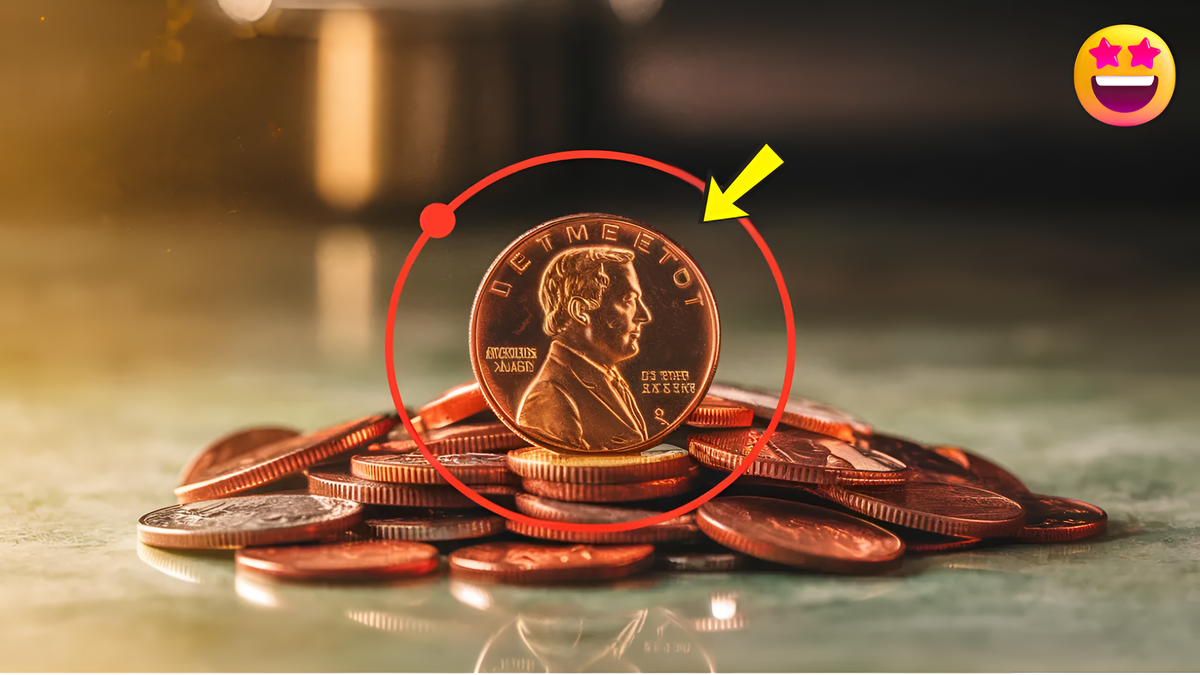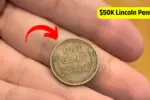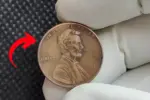In the world of numismatics, few coins are as celebrated as the Lincoln Wheat Penny. Produced from 1909 to 1958, these pennies are a cornerstone of American coin collecting. While many Lincoln Wheat Pennies are commonly found in collections, one particular penny recently astonished the numismatic community when it was valued at an astounding $8.8 million. This remarkable valuation catapulted the coin into the realm of legends, drawing attention to its unique attributes, historical significance, and rarity.
What makes this humble penny worth millions? Let’s explore its journey, the characteristics that set it apart, and whether there could be similar treasures hiding in your collection.
What Is a Lincoln Wheat Penny?
The Lincoln Wheat Penny, often referred to simply as the Wheat Penny, was introduced in 1909 to commemorate the 100th anniversary of Abraham Lincoln’s birth. Its creation marked the first time a U.S. coin featured the likeness of an actual historical figure, breaking tradition with earlier designs.
Distinctive Design
- Obverse: The obverse (front) features a detailed profile of President Abraham Lincoln, designed by Victor David Brenner.
- Reverse: The reverse showcases two wheat stalks bordering the text “ONE CENT”, along with “UNITED STATES OF AMERICA.”
- Material: Most Lincoln Wheat Pennies were minted using a bronze alloy consisting of 95% copper and 5% zinc or tin. However, during wartime in 1943, copper was reserved for war efforts, leading to the production of steel pennies for that year.
While millions of Lincoln Wheat Pennies were produced during their run, only a select few, like the $8.8 million penny, possess the rarity and features required to command such value.
The Astonishing $8.8 Million Lincoln Wheat Penny
The extraordinary valuation of $8.8 million for this particular Lincoln Wheat Penny highlights its unmatched rarity and historical significance. This was no ordinary coin but a remarkable error specimen that defied expectations.
Why Is This Coin Worth Millions?
- Rare Material Composition: In 1943, due to copper shortages, pennies were struck using steel-coated zinc. However, a very small number of pennies were mistakenly struck using bronze planchets intended for earlier years. The $8.8 million penny is one of these rare bronze errors from 1943.
- Condition: The coin is graded as MS-68 RD (Red), which means it is in nearly perfect mint-state condition with vibrant coloring. Such preservation is incredibly rare for coins over 75 years old.
- Historical Value: As a product of World War II-era minting, this penny symbolizes a unique chapter in American history.
- Rarity: Only a handful of 1943 bronze Lincoln Wheat Pennies exist today, making each one extraordinarily valuable.
These factors combined to create a numismatic masterpiece that collectors and investors alike consider a once-in-a-lifetime find.
The Journey of Discovery
The $8.8 million Lincoln Wheat Penny’s story began in the pocket change of an unsuspecting individual a high school student in the 1940s. The coin was kept as a curiosity for years before being recognized as one of the rarest U.S. coins ever produced. Eventually, it was appraised by a numismatist and sold at auction, forever cementing its place in coin-collecting history.
This tale is a reminder of how treasures can often go unnoticed, hiding in plain sight until someone takes a closer look.
Understanding Coin Grading and Its Impact on Value
One key reason the $8.8 million Lincoln Wheat Penny fetched such a high price was its exceptional grading. Professional grading by agencies like PCGS (Professional Coin Grading Service) and NGC (Numismatic Guaranty Corporation) ensures accurate evaluation and certification of a coin’s condition and quality.
Grading Criteria
- Mint State (MS): Coins graded as Mint State are in uncirculated condition with no signs of wear.
- Color Designation (RD, RB, BN): Copper coins are graded based on their coloring. “Red” (RD) coins are the most desirable due to their vibrant copper tone.
- Surface Quality: Coins free from scratches, blemishes, or discoloration are assigned higher grades.
- Strike Precision: A well-struck coin with clear details receives higher marks.
For collectors, professionally graded coins represent a reliable investment due to their authenticated value and preserved condition.
The Value of Error Coins in Numismatics
Error coins, like the 1943 bronze Lincoln Wheat Penny, are highly sought after for their rarity and unique appeal. Minting errors occur due to manufacturing mistakes, and these anomalies often lead to significant value for collectors.
Types of Coin Errors
- Off-Center Strikes: A misalignment during the stamping process creates an incomplete design.
- Wrong Planchets: Coins are struck on planchets intended for a different denomination or material, as seen with the $8.8 million penny.
- Double Dies: A misalignment of the dies results in doubled designs on the coin’s surface.
These rare errors are fascinating to collectors because they represent moments of imperfection in an otherwise precise process.
Could You Own a Valuable Lincoln Wheat Penny?
The $8.8 million Lincoln Wheat Penny may seem like an elusive dream, but rare coins with significant value can still be found in collections, flea markets, and even pocket change.
Tips for Spotting Rare Pennies
- Check the Date: Focus on pennies minted in 1943 (bronze error) or 1909-S VDB (featuring the designer’s initials “VDB”).
- Inspect Mint Marks: Look for rare mint marks, such as “S” (San Francisco) or “D” (Denver).
- Spot Material Differences: Steel pennies from 1943 that look slightly different may be bronze planchet errors.
- Consult a Numismatist: Professional appraisers can verify your coin’s authenticity and provide grading.
Could there be a million-dollar coin hiding among your old pennies? Only a closer inspection will reveal the answer.
The Allure of Collecting Coins
Rare coins like the $8.8 million Lincoln Wheat Penny embody more than monetary value they offer a chance to explore history, artistry, and culture. The world of numismatics is vast and rewarding, attracting collectors of all backgrounds.
Reasons to Collect Coins
- Preserving History: Coins serve as tangible artifacts from different eras.
- Cultural Exploration: Designs reflect the values and priorities of societies at the time.
- Financial Investment: Rare and well-preserved coins often appreciate in value.
Numismatics combines the thrill of discovery with the satisfaction of ownership, making it an endlessly fascinating pursuit.
Conclusion: A Penny for History
The Lincoln Wheat Penny valued at $8.8 million is more than a piece of currency it’s a treasure that captures the essence of American history, wartime ingenuity, and the enduring appeal of coin collecting. From its accidental minting to its record-breaking valuation, this coin reminds us that even the smallest items can hold extraordinary value.
As collectors continue their search for rare pennies, one thing is certain: the excitement of uncovering numismatic gems will never fade. Could the next multimillion-dollar coin be hiding in your pocket change? Keep looking you never know what history might reveal.
FAQs
What is a Lincoln Wheat Penny?
A U.S. penny minted from 1909 to 1958 featuring wheat stalks on the reverse side.
Why is the 1943 bronze penny so valuable?
Because it was mistakenly struck in bronze during a year when steel was used instead.
How can I tell if my penny is rare?
Check the date, mint mark, material, and consult a professional appraiser.
What does MS-68 RD mean in coin grading?
It means the coin is in mint condition with full red copper coloring.
Where can I get my coin graded?
Trusted grading services include PCGS and NGC.



